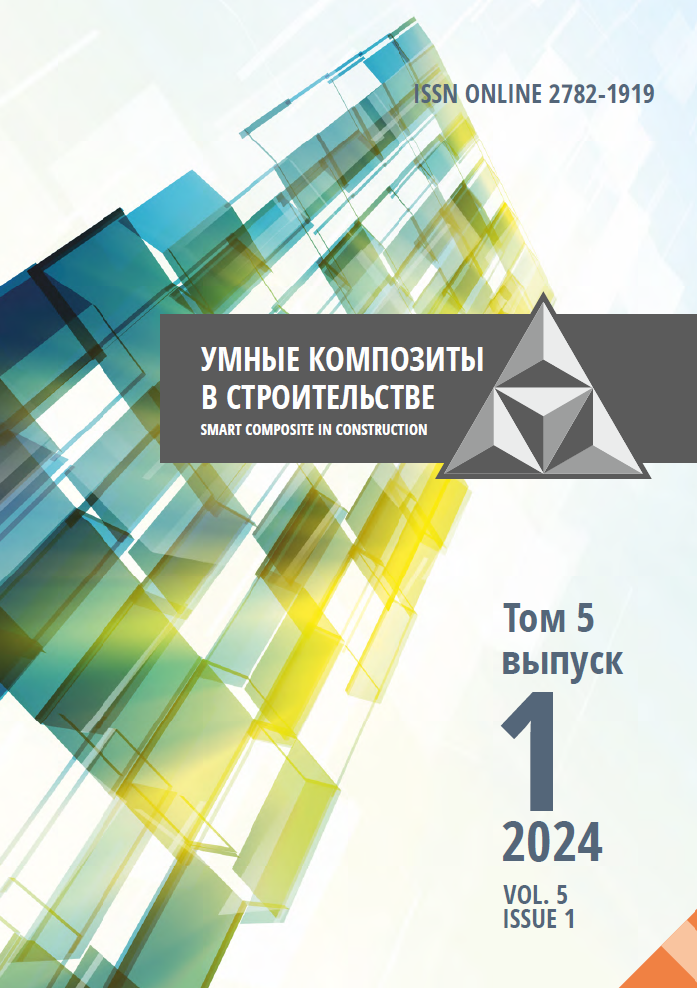Kostroma state University (Department of logging and wood processing industries, department chair)
from 01.01.2016 to 01.01.2019
Kostroma, Kostroma, Russian Federation
UDC 674.028
The paper considers calculated and experimental methods of determining the thermal conductivity coefficient of wooden glued structures. The author shows that when designing the thermal protection of building enclosure structures in the form of CLT-panels or wooden glued laminated timber, one uses reference data on the thermal conductivity coefficient for pine or spruce. In practice, the value of the thermal conductivity coefficient may be less than the reference value; as a consequence, the thickness of the building enclosing structures is overestimated. This is not reasonable in terms of material intensity of construction. When considering wood as an anisotropic material, the peculiarities of the macrostructure and differences in the density of individual layers, as well as the wood species, should be taken into account when determining the parameters of structures. Based on the physical description of the thermal conductivity process and the fundamental laws of heat and mass transfer, the author proposes that it is necessary to adjust the results of calculations to the actual values of the thermal conductivity coefficient of multilayer wooden glued structures. The paper presents the results of experimental determination of the thermal conductivity coefficient of pine and aspen wood using steady-state and unsteady heat flow methods. It is shown that, depending on the density and wood species, experimental values of the thermal conductivity coefficient from 0.102 to 0.115 W·m-1∙K-1 can be obtained.
wooden glued structures, wooden house building, thermal conductivity, methods of thermal conductivity determination
1. Ministry of Construction of Russia. (2022) Russia will ensure widespread introduction of multi-storey wooden house building [online]. Available at: https://minstroyrf.gov.ru/press/v-rossii-budet-obespecheno-shirokoe-vnedrenie-mnogoetazhnogo-derevyannogo-domostroeniya/ (accessed 10.10.2023) (in Russian).
2. Treybaks, E.A. (2017) Utilization of unique properties of glued wood CLT panels in the construction of public buildings, Innovatcii v nauke, 10(71), pp. 68-69 (in Russian).
3. Leonovich, O.K. & Korob, A.Yu. (2022) Promising directions in the construction of wooden low-rise buildings, Trudy BGTU. Ser. 1, Lesnoe khozyajstvo, prirodopol'zovanie i pererabotka vozobnovlyaemykh resursov, 1(252), pp. 188 198 (in Russian).
4. Frame houses. Kinds. Pros and cons of frame houses [online]. Available at: https://www.svoyidoma.ru/karkasnye-doma-vidy-plyusy-i-minusy-karkasnykh-domov (accessed 15.11.2023) (in Russian).
5. Volkov, R. (2023) Frame technology of house construction: types of housing construction, advantages and disadvantages, photo [online]. Available at: https://m-strana.ru/articles/karkasnoe-domostroenie-preimushchestva-inedostatki (accessed 15.11.2023) (in Russian).
6. Kovalchuk, L.M. (1988) Manufacturing technology and durability of wooden structures, Izvestiya vuzov. Arkhitektura i stroitel’stvo, 8, pp. 22–30 (in Russian).
7. Varfolomeev, Yu. & Roaldset, E. (2011) Development of an experimental model of a wooden modular house for the north of Russia, Ustoychivyye energeticheskiye resheniya dlya Kraynego Severa. Arkhangelsk, pp. 87-89 (in Russian).
8. Shtembakh, A. (2017) Modern technologies of housing construction with the use of wood structures, LPK Sibiri, 3 [online]. Available at: https://lpk-sibiri.ru/wooden-construction/sovremennye-tehnologii-domostroeniya-s-primeneniem-konstruktsij-iz-drevesiny/ (accessed 10.10.2021) (in Russian).
9. SP 50.13330.2012 Thermal protection of buildings. Updated edition of SNiP 23-02-2003. Moscow: Ministry of Regional Development of Russia (in Russian).
10. Paderin, V. (2021) Cutting tools and equipment for CLT processing, LesPromInform, 6 [online]. Available at: https://lesprominform.ru/jarticles.html?id=6047 (accessed 10.10.2021) (in Russian).
11. Bogoslovskiy, V.N. (1979) Thermal regime of the building. Moscow: Stroyizdat (in Russian).
12. Chudinov, B.S. (1968) Theory of thermal processing. Moscow: Nauka (in Russian).
13. Fedosov, S.V., Kotlov, V.G., Aloyan, R.M., Bochkov, M.V. & Ivanova, M.A. (2016) Methodology of the experimental study of the mass-conducting characteristics of fibre and wood-fibre materials, Izvestiya vuzov. Tekhnologiya tekstil'noj promyshlennosti, 5(365), pp. 90-93 (in Russian)
14. Thermal conductivity meter ITP-MG4. Operation manual. Technical specifications (1998). Ekaterinburg (in Russian).
15. Borovikov, A.M. & Ugolev, B.N. (1989) Reference book on wood: reference book. Moscow: Lesnaya Promyshlennost´ (in Russian).







